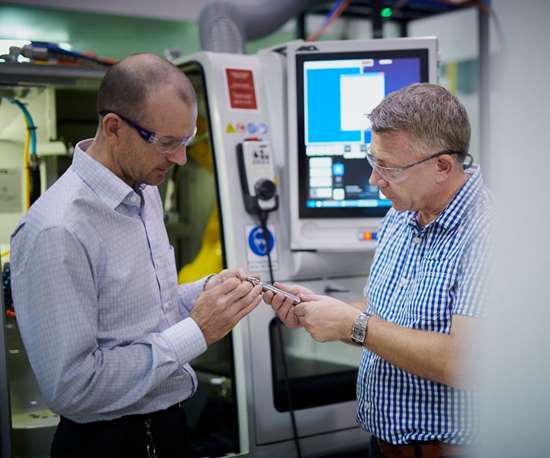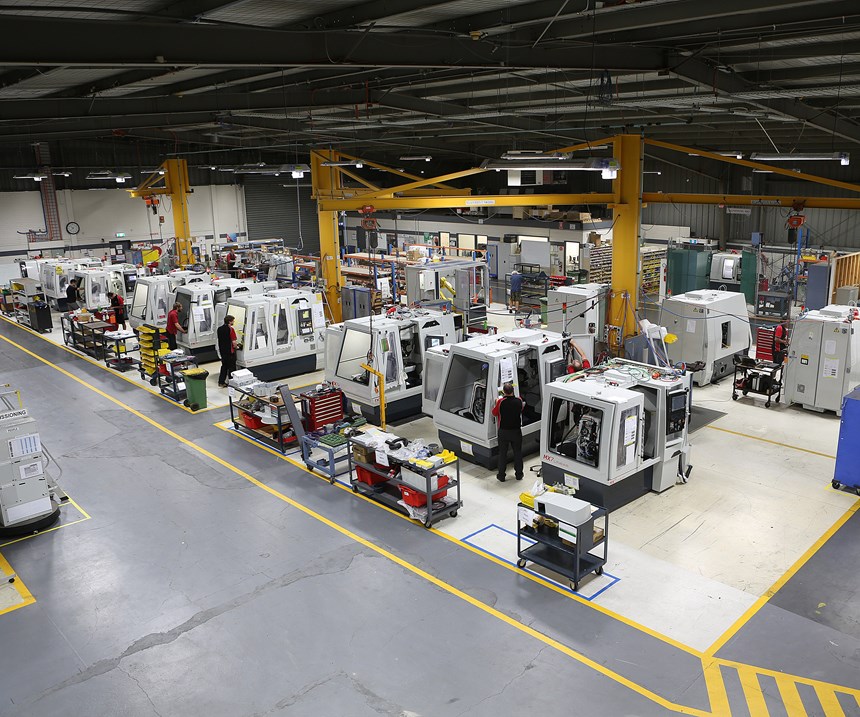10 Tips to Get the Most Out of a Grinding Machine
Following these 10 steps can help grinding shops produce high-quality tools, increase productivity, reduce breakdowns and extend machine life.
#basics
Edited by Julia Hider
Grinding machines can be a significant investment, so shops should do everything they can to ensure their machines are as productive as possible. ANCA Product Manager Simon Richardson has been working with tool grinders for many years. During this time, he has visited hundreds of tooling workshops around the world and has built up his knowledge on grinding machines. He has also seen firsthand how following a few simple steps can help shops get the most out of their grinding machines.
Most of these tips would be part of an operator’s everyday activities, he says. But following them can help grinders produce better tools, increase productivity, reduce breakdowns and extend machine life.
- Keep things tidy and in order. Mr. Richardson recommends that all shops start a 5S program. A workplace that is clean and structured ensures that equipment is always within reach and readily available. It can also save time because items are not lost or misplaced. A tidy workplace also looks better for visitors. Every interaction someone has with a company is a chance to build a brand.
- Tightly maintain the ambient and coolant temperatures. When producing accurate tools, it is critical the ambient and coolant temperature are stabilized and within one degree of each other. A chiller will maintain the correct oil temperature and is worth the investment, according to Mr. Richardson.
- Use the best coolant system possible. A lot of companies do not see the value of good coolant systems and do not spend enough money on them. Clean, filtered coolant enhances grinding performance and keeps the machine looking like new. A good filtration system can also ensure the longevity of the machine and maximize the return on investment.
- Handle and store precious items carefully. Items such as collet adapters and grinding wheels can be expensive and are critical to producing quality tools, so they should be stored and handled with care. Proper storage not only protects these valuable items, but also keeps inventory visible and manageable.
- Dress and condition grinding wheels regularly. Frequent dressing and conditioning of grinding wheels will increase productivity. The wheels perform better and improve the surface finish of the tools. Worn wheels also make the machine spindle work harder, putting it under unnecessary stress.
- Keep collets clean and in good condition. This rule may sound like a no-brainer, but Mr. Richardson says many grinding shops use collets with grinding marks on the nose and dirt inside the collet. Sometimes shops hang on to collets too long. They should be considered a consumable item and replaced as required.
- Use high-quality blanks and the correct insert depth into the collet. If shops want to produce a good quality tool, they should start with a good quality blank. They should also put the maximum amount of tool into the collet. ANCA’s 3D simulator (3DCIM) can calculate the maximum insertion depth automatically and prevent grinding into the collet.
- Read the machine manual. When shops buy new or unfamiliar machines, employees should read the manual and any documentation that comes with it. Users can learn a lot by reading these materials. This step can also save time and help avoid expensive mistakes down the road. In addition, many machine tool manufacturers provide videos to help customers better understand how to use the equipment.
- Follow the advised maintenance schedule. Dedicate time at the end of the week to clean the machine and perform the maintenance tasks stipulated by the manufacturer. Like any technology, taking the time to conduct preventive maintenance will pay off in the long term. Preventive maintenance is better managed and has less impact on a company than unplanned breakdown maintenance.
- Ensure the air supply and electrical power to the machine meet the manufacturer’s recommendations. Follow the manufacturer’s guidelines for air quality and electrical supply to the machine. Following a few simple rules during installation can prevent costly machine breakdowns.
RELATED CONTENT
-
Bond Selection for Production Grinding
Proper grinding wheel selection is essential to ensure that the required part quality, production rate, and overall cost per part is achieved. Although the type of abrasive grain is often a primary driver of wheel selection, the bonding type can also play a key role in optimizing a grinding operation.
-
Dressing Technique for Truing Up Diamond Grinding Wheels
This tapered diamond grinding wheel dressing technique, which takes place inside the machine, is used in production of high-precision profile inserts.
-
Keeping Current with the Medical Machining Market
The medical machining industry being supplied by the precision machined parts industry is changing. This Northeast Ohio shop is working to keep up with the need to serve changing requirements of its medical customers by increasing the shop’s operational capabilities.






